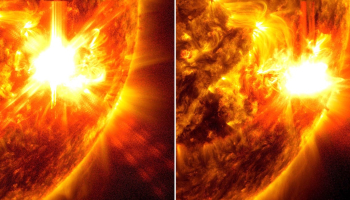
[ad_1]
After a wild winter of more than a dozen huge storms and record-breaking snowfall in the Sierra Nevadas, California’s big flood season is just getting started.
Last week, the National Weather Service predicted that the Merced River could flood parts of Yosemite National Park, thanks to a combination of unseasonably warm temperatures and melting snowpack. Yosemite officials announced that the park would close in anticipation of the flooding. The Merced River runs through some of the park’s most popular areas.
Early Monday morning, river levels peaked at 9.86 feet (3 meters), just below official flood levels and about a foot less than predicted, and are expected to continue to decline throughout the week, according to data from the National Weather Service. Because flows ended up being lower than expected, the park reopened with limited hours Sunday and will reopen in full on Monday. Visitors were warned on social media to be alert to conditions in the park and to expect heavy traffic congestion and limited hiking.
“Rivers are running very high and are extremely dangerous,” the park’s Twitter account posted Saturday. “Do not go into or even approach rivers in Yosemite.”
Elsewhere in the state, lakes are coming back from the dead, thanks to heavy rains after a lengthy drought. In San Joaquin Valley, Tulare Lake, which has been a dry basin for decades, has seen a staggering reemergence after nearly a year straight of heavy rain. Tulare was drained in the 1920s, as the rivers that fed it were dammed for agriculture and farmland grew up in the perimeter of the lakebed.
While some flooding happens seasonally in the lakebed, the last time the lake reappeared with this much strength was in the 1980s; it took two years to fully drain. Now, unprepared towns in and around the lake are asking for help as roads remain flooded and crops are overtaken by water.
Experts say that even more water could be coming, as the snowpack from the Sierra Nevadas continues to melt. The water from that snowpack could hit the region in May and June. The basin is currently seeing anywhere between a half-inch to an inch of water added each day.
“We’re working with our federal and local counterparts to provide on-the-ground assistance and the support locals need,” Governor Gavin Newsom said during a visit to the flooded areas at the end of April. “This weather whiplash is what the climate crisis looks like.”
[ad_2]
Source link






